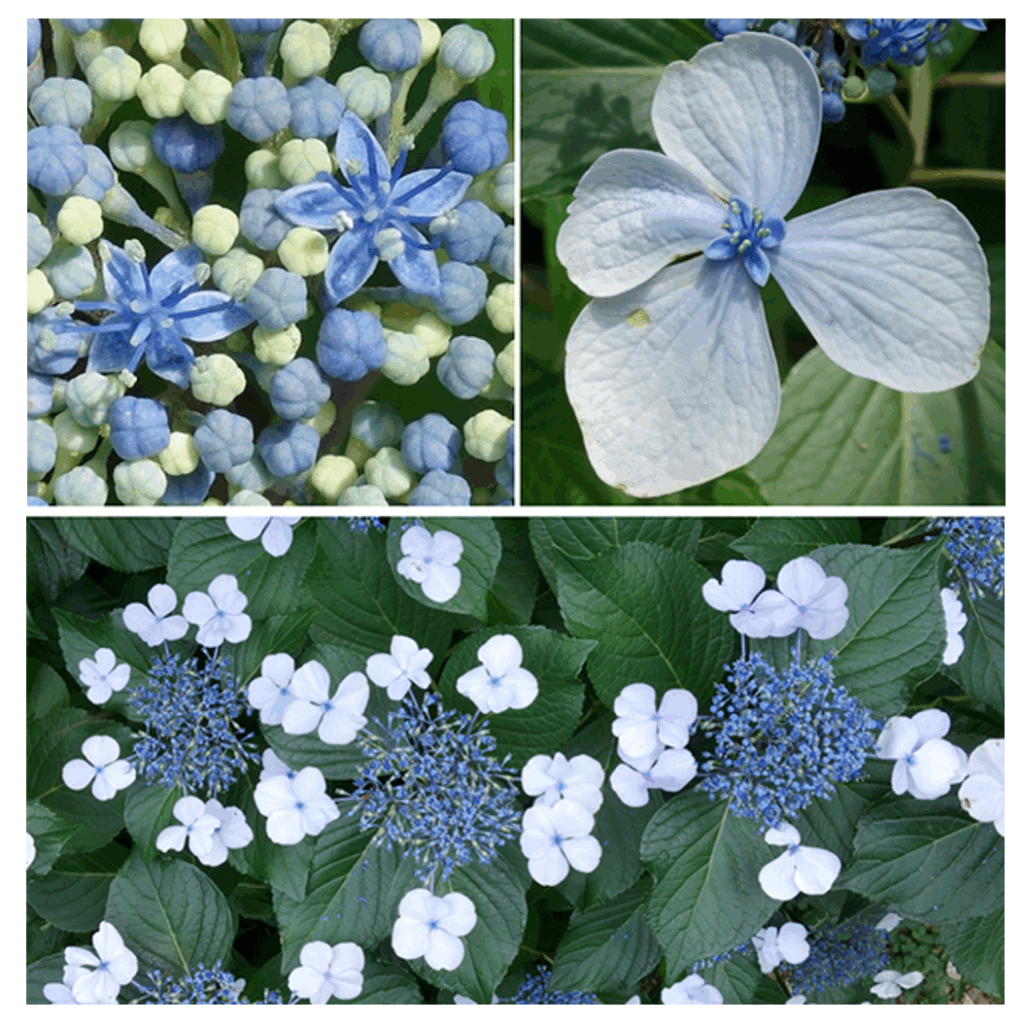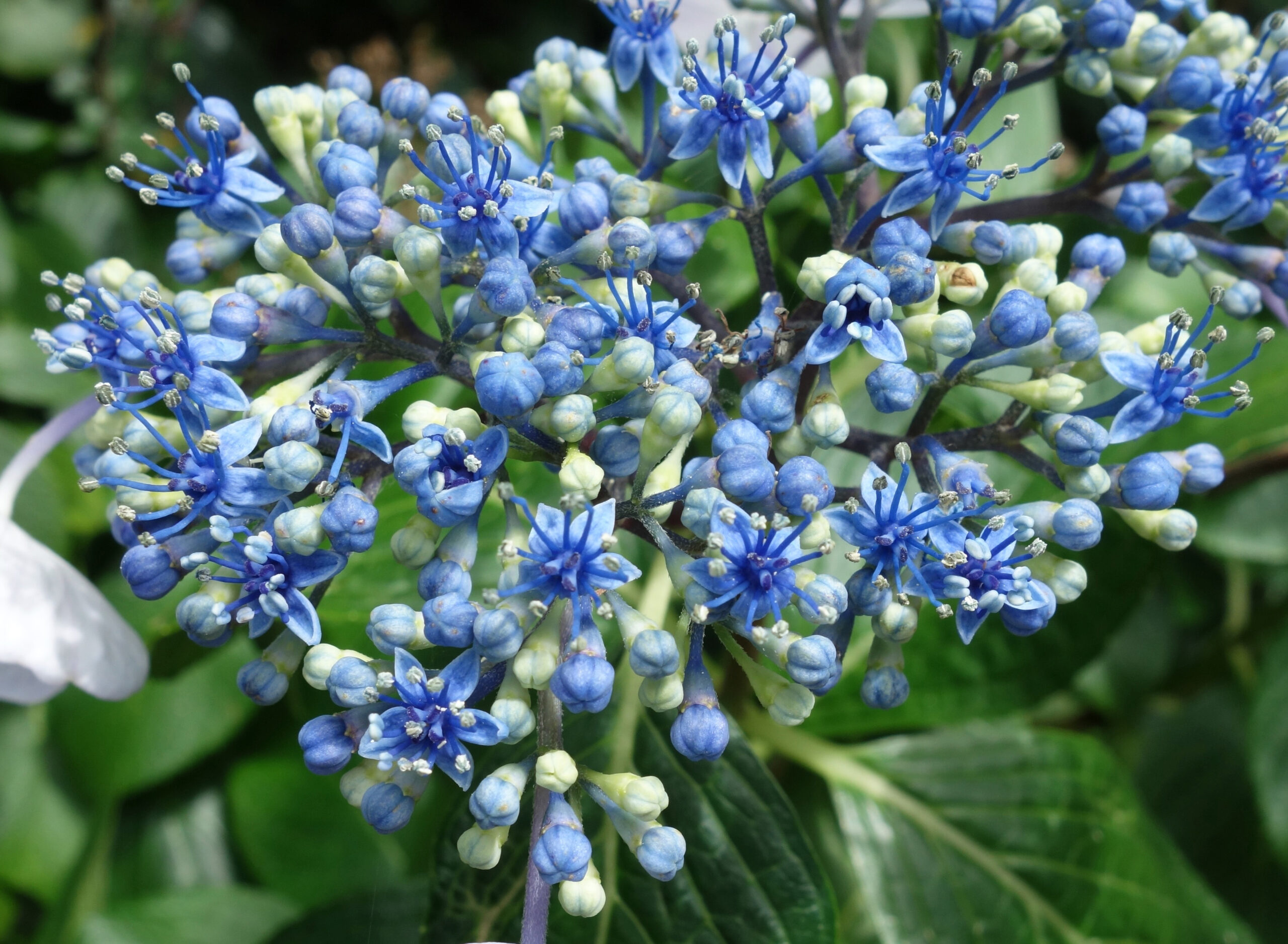Driving around New England right now, you can see big blue heads of showy hydrangea flowers dominating many a front yard. The wild progenitor species, Hydrangea macrophylla (bigleaf hydrangea), has very different looking inflorescences. Fortunately, at the Arnold Arboretum we have this endemic Japanese species in bloom right now. It’s a real beauty.

Bigleaf hydrangeas, like all hydrangeas, have two forms of flowers: one showy and typically at the periphery of the inflorescence and the other small, towards the interior of the inflorescence, and less prominent (at least to an insect pollinator). The small flowers are mostly pentamerous (five parted) and in the upper left image (405-2007*D ) you can see two open flowers with five wonderful blue petals (the rest of the yellow-turning-to-blue flower buds have yet to open). The sepals (the outermost whorl of the flower) are very small and not visible. The showy flowers however (upper right image; 405-2007*D) are tetramerous, but here is where things get interesting. The showy parts of these flowers are the sepals! As you can see in the upper right photograph, there are four large light blue sepals and four small intensely blue petals in the middle of the flower that are very similar to the petals of the small pentamerous flowers.
Most of our cultivated hydrangeas are derived from a small set of mutations that convert most of the small flowers into large showy flowers. This year, a team of scientists in Japan figured out which genes are involved (these natural mutations occurred in wild plants that then were used to breed new cultivars). The flat-topped inflorescence of the wild species is referred to as a “lacecap” form and the huge spherical mounds of the showy inflorescences found in our yards, gardens and many temples in Japan are called a “mophead” form. Personally, I love the subtlety of the natural or wild species, the floating heads of flowers delicately set off against the deep green leaves (lower image; 405-2007*A) with just a sprinkling of the showy flowers on the perimeter of each inflorescence. But, for sheer over the top floral displays, you gotta go with the mopheads!
